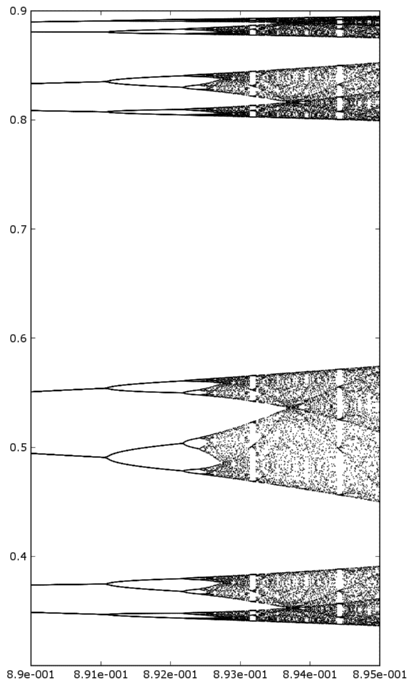 There are many strange sets that emerge in science. In statistical
mechanics, these sets arise at continuous phase transitions
where self-similar spatial structures arise. In chaotic dynamical systems,
the attractor (the set of all states occupied at long times, after the
transients have disappeared) is often very strange. These sets are
often tenuous and jagged, with holes on all length scales.
There are many strange sets that emerge in science. In statistical
mechanics, these sets arise at continuous phase transitions
where self-similar spatial structures arise. In chaotic dynamical systems,
the attractor (the set of all states occupied at long times, after the
transients have disappeared) is often very strange. These sets are
often tenuous and jagged, with holes on all length scales.
We often try to characterize these sets with a fractal dimension. The dimensions of two extremely different sets, however, can be the same: the path exhibited by a random walk in high dimensions is two--dimensional, just like the surface of a sphere. If the fractal dimensions are different, though, the sets are different.
There is more than one way to define a dimension for a set. This exercise will calculate the capacity dimension (originally called the Hausdorff dimension) and the information dimension (related to the entropy). To generate our strange set, we use a system that both has a strange attractor and is at a continuous phase transition: the logistic map at the period doubling onset of chaos.
Last modified: August 24, 2006
![]() Statistical Mechanics: Entropy, Order Parameters, and Complexity,
now available at
Oxford University Press
(USA,
Europe).
Statistical Mechanics: Entropy, Order Parameters, and Complexity,
now available at
Oxford University Press
(USA,
Europe).